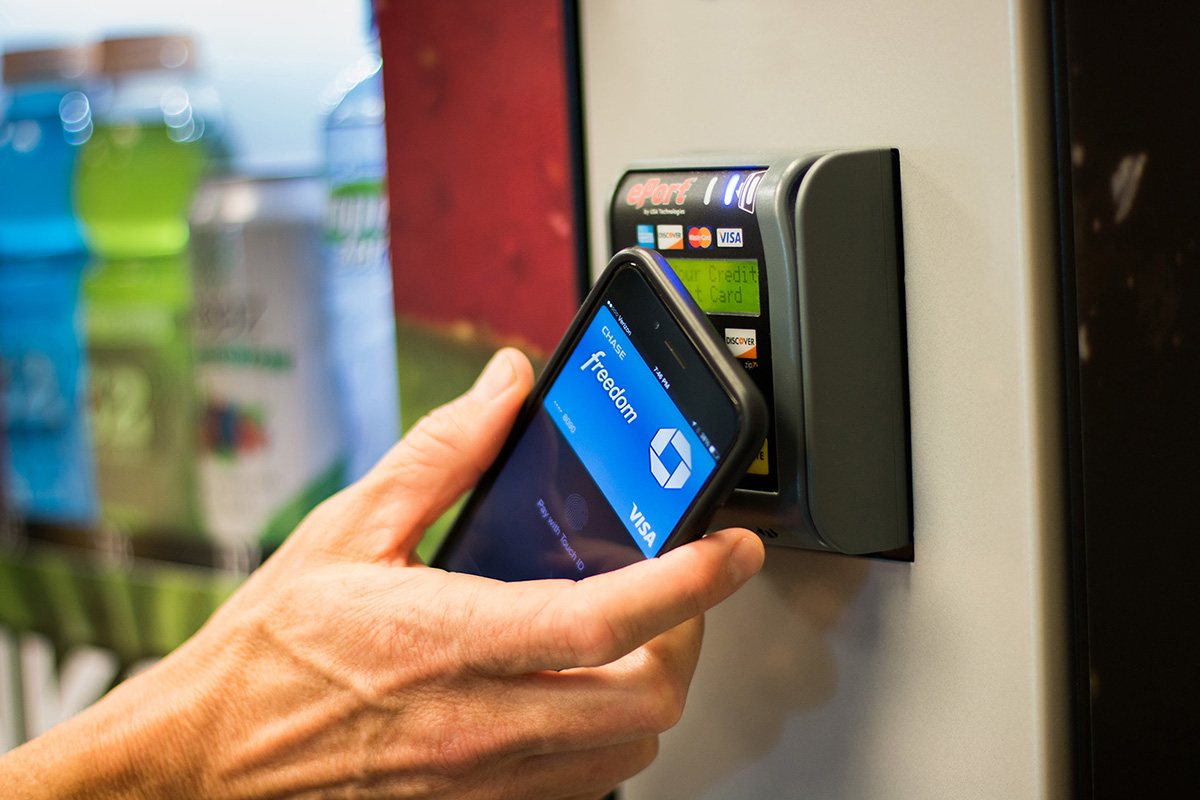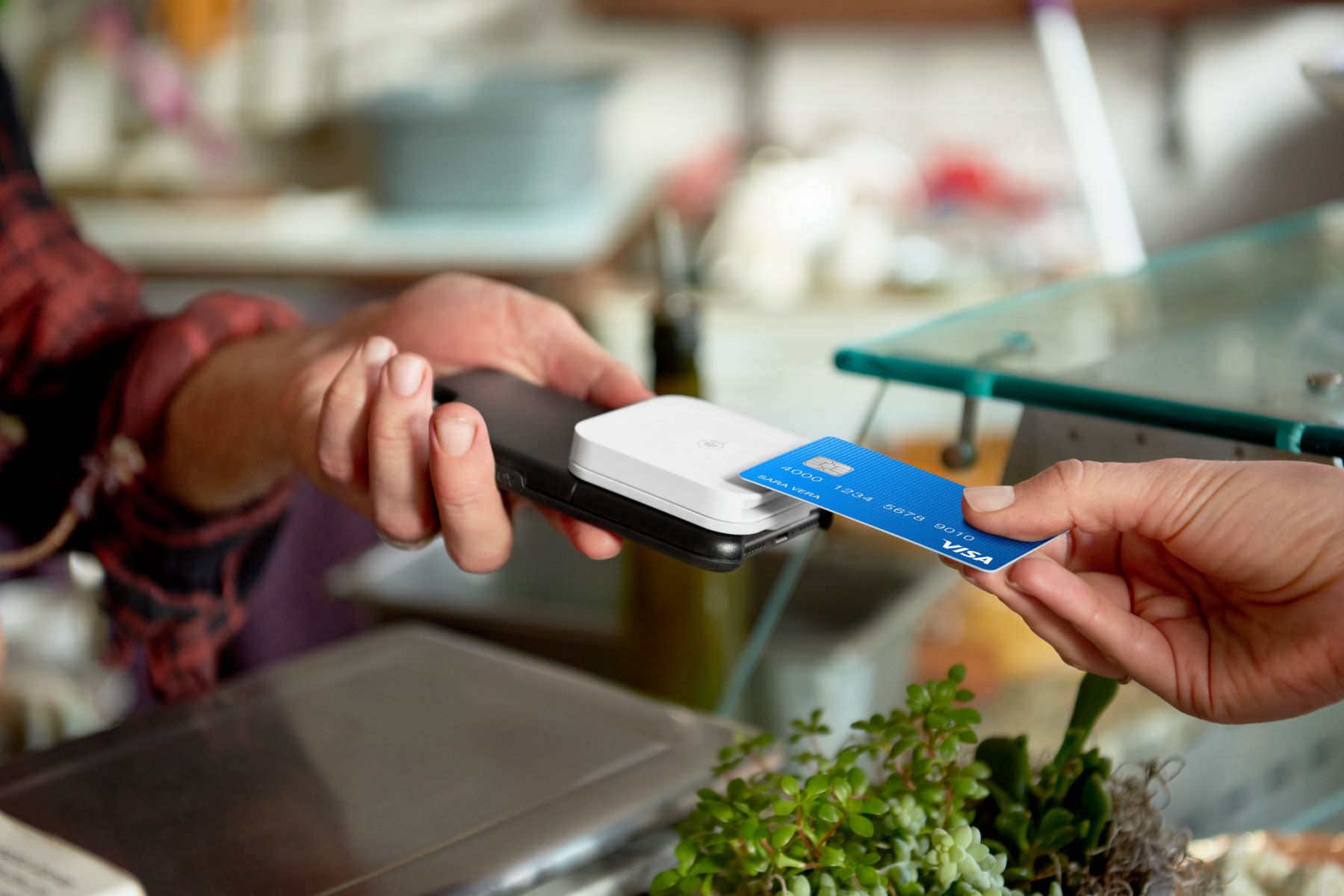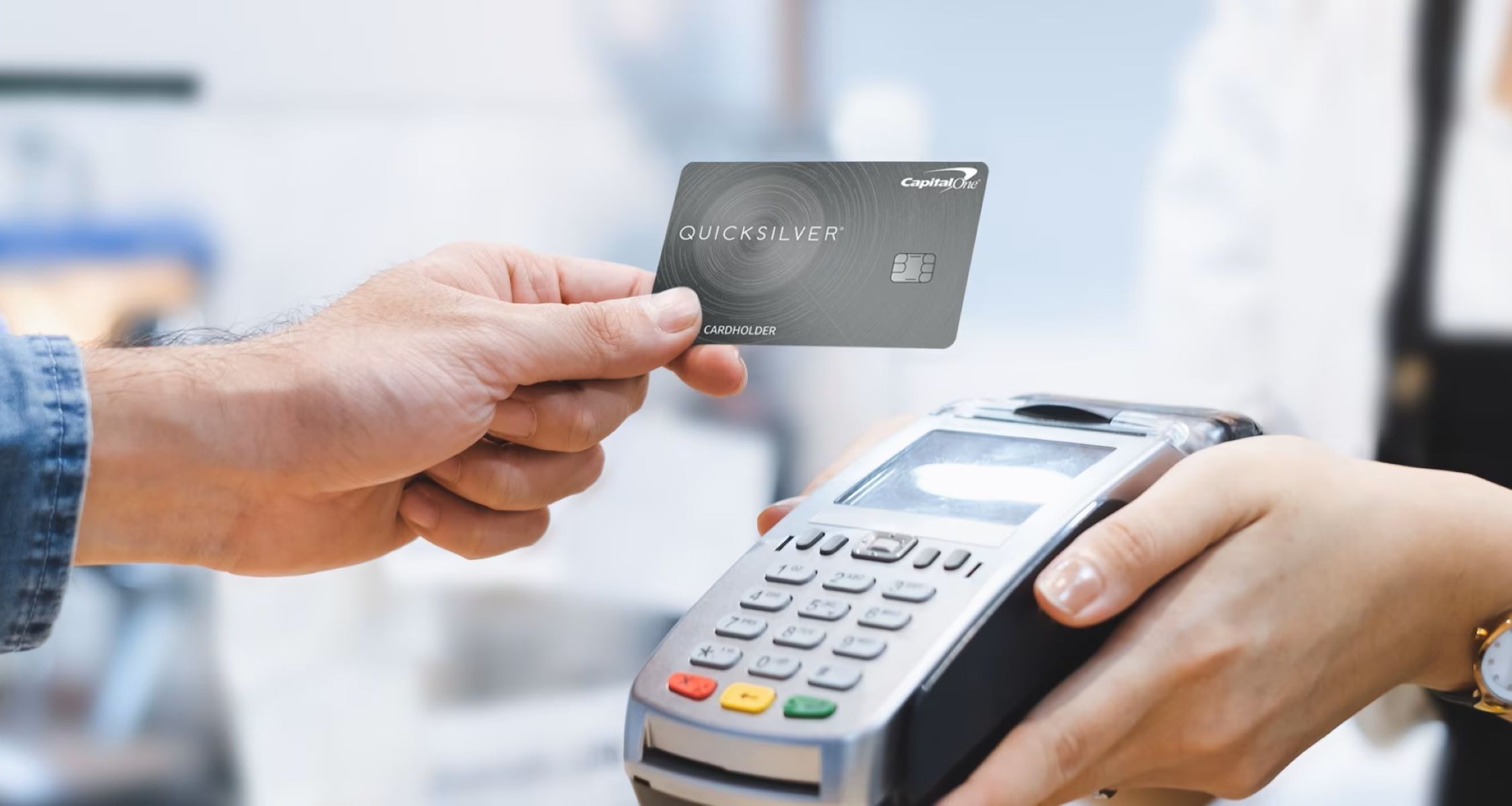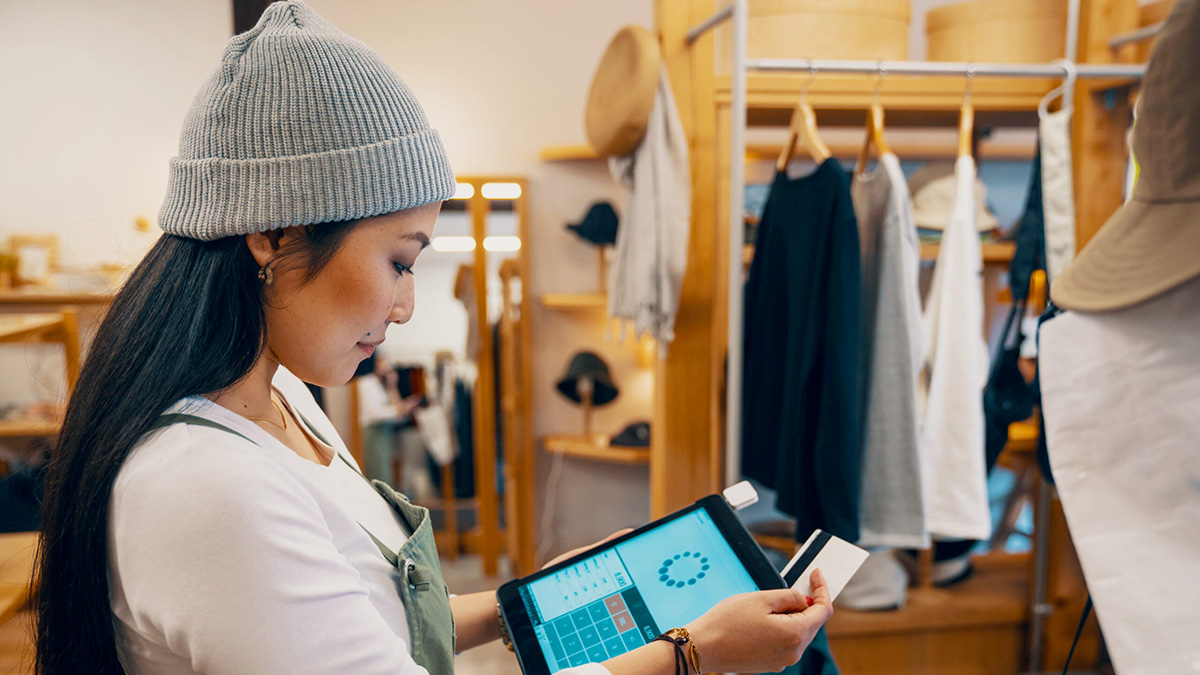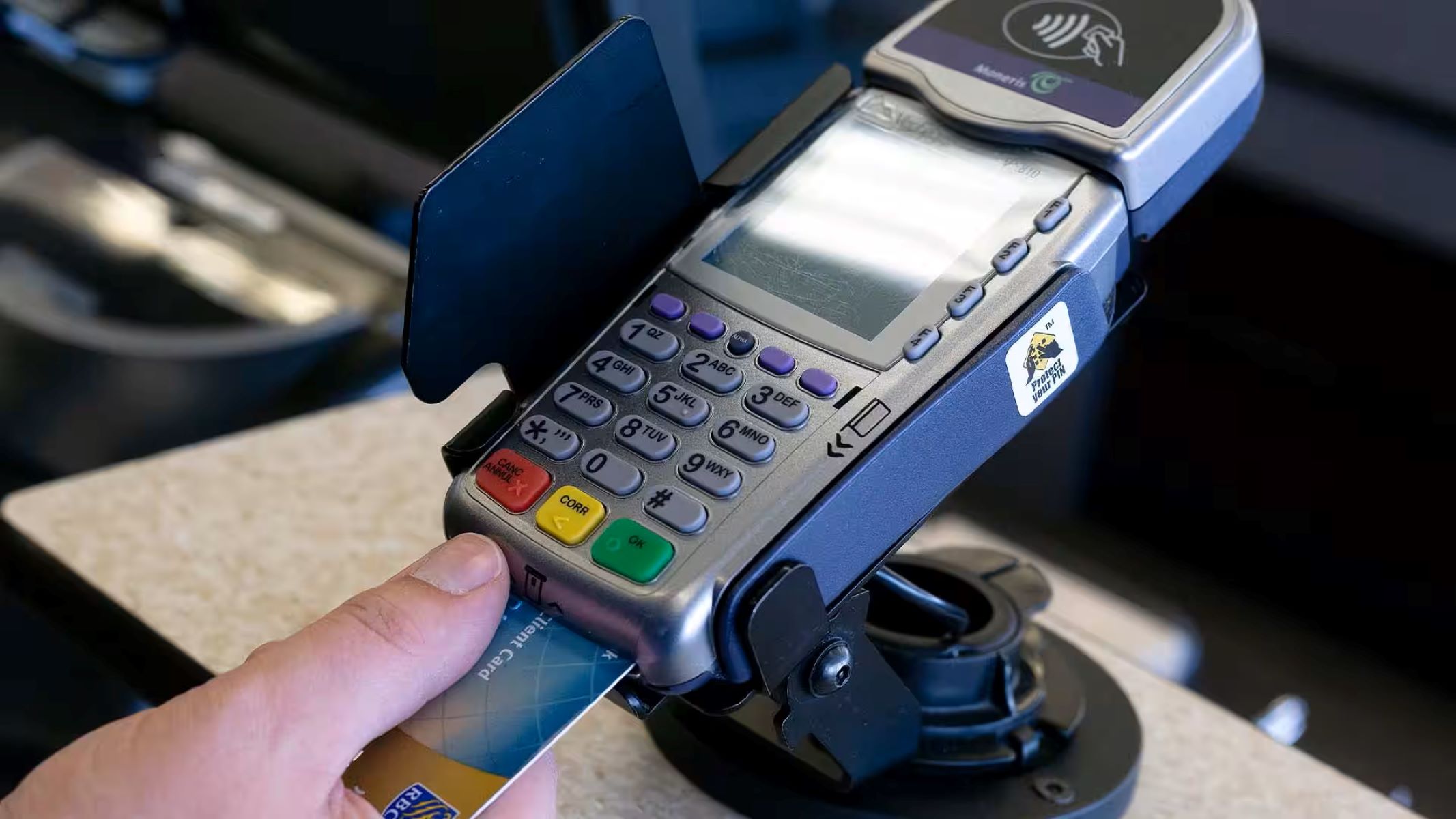

Finance
How Do Credit Card Readers Work
Published: October 25, 2023
Discover how credit card readers work and how they are used in the finance industry. Learn about the technology behind these devices and how they facilitate secure transactions.
(Many of the links in this article redirect to a specific reviewed product. Your purchase of these products through affiliate links helps to generate commission for LiveWell, at no extra cost. Learn more)
Table of Contents
Introduction
As we move towards a cashless society, the use of credit cards has become increasingly prevalent. Whether you’re making a purchase at your favorite store, paying for a meal at a restaurant, or shopping online, credit card readers play a crucial role in facilitating secure and convenient transactions.
Credit card readers are the devices that allow businesses to accept credit and debit card payments. They come in various forms and utilize different technologies to ensure the accuracy and security of the transaction process.
In this article, we will explore the different types of credit card readers used in today’s financial landscape. From magnetic stripe readers to chip-and-PIN devices, contactless payment readers, mobile card readers, and virtual terminals, we will delve into the mechanics and functionalities of each type.
By understanding how credit card readers work, consumers can feel more confident in using their cards and business owners can make informed decisions when choosing the most suitable payment solution for their organization. So, let’s dive into the world of credit card readers and unravel the technology behind these essential financial tools.
Magnetic Stripe Reader
Magnetic stripe readers, also known as magstripe readers, are one of the most common types of credit card readers. They are widely used in point-of-sale (POS) systems, ATMs, and other payment terminals. The technology behind magnetic stripe readers relies on the information stored in the magnetic stripe on the back of a credit or debit card.
The magnetic stripe is made up of tiny iron-based magnetic particles. When the card is swiped through the reader, the magnetic stripe reader generates a magnetic field that interacts with the magnetic particles on the stripe. As the card is swiped, the reader detects and reads the encoded information, including the cardholder’s account number, name, and expiration date.
Once the information is read, the magnetic stripe reader securely transmits it to the payment processing network for authentication and authorization. This process ensures that the cardholder has sufficient funds to complete the transaction and that the transaction is valid.
Although magnetic stripe readers have been widely used for decades, they do have some limitations. The information stored on the magnetic stripe is static and can be easily copied or skimmed, making it susceptible to fraud. Additionally, the physical contact between the card and the reader can result in wear and tear on both the card and the reader.
However, advancements in technology have led to the adoption of more secure alternatives, such as chip-and-PIN readers and contactless payment readers. These newer options offer enhanced security features and provide a more seamless and convenient payment experience for both customers and merchants.
Despite the presence of newer technologies, magnetic stripe readers are still prevalent in some areas, especially in regions where the transition to chip-based cards has been slower. It is essential for businesses to ensure the security and integrity of their magnetic stripe reader systems through regular maintenance and updates to protect against potential vulnerabilities.
Chip-and-PIN Reader
The chip-and-PIN reader, also known as the EMV (Europay, Mastercard, and Visa) reader, is a more secure alternative to magnetic stripe readers. This technology was developed to combat the increasing incidence of credit card fraud. The chip-and-PIN reader utilizes a microchip embedded in the credit or debit card, which contains encrypted information that is difficult to replicate or skim.
When making a transaction with a chip-and-PIN reader, the customer inserts their card into the reader. The chip interacts with the reader, establishing a secure connection. The customer is then prompted to enter their personal identification number (PIN) to authorize the transaction.
The encryption technology used in chip-and-PIN readers generates a unique transaction code for each purchase. This code cannot be reused, making it challenging for fraudsters to replicate the transaction or steal sensitive card information. Additionally, the use of the PIN adds an extra layer of security, as it verifies that the person making the transaction is the legitimate cardholder.
Chip-and-PIN readers are widely adopted in many countries worldwide, especially in Europe. The transition from magnetic stripe to chip-based cards has significantly reduced instances of fraud related to cloned cards. However, it is worth noting that chip-and-PIN technology is not foolproof. Skimming devices and other sophisticated methods are still used by criminals to compromise card data, but the added security measures make it much more difficult to succeed.
Businesses that operate with chip-and-PIN readers must ensure that their payment processing systems are compliant with the latest security standards to protect against potential vulnerabilities. Regular updates and maintenance are essential to maintain the integrity of the chip-and-PIN reader and provide a secure payment environment for customers.
Near Field Communication (NFC) Reader
Near Field Communication (NFC) readers are revolutionizing the way we make payments with our smartphones and contactless cards. NFC technology enables two devices, such as a smartphone and an NFC reader, to establish communication when they are in close proximity to each other.
With NFC readers, customers can make payments by tapping or waving their NFC-enabled device or contactless card near the reader. The reader emits a radio frequency (RF) field that powers the NFC chip in the device or card. The NFC chip then securely transmits the payment information to the reader using a process called tokenization.
Tokenization involves replacing the sensitive card data, such as the card number, with a unique token. This token is then transmitted to the payment processing network for authentication and authorization. The actual card details are not exposed during the transaction, ensuring the security of the payment information.
NFC readers are commonly found in retail stores, coffee shops, and other businesses that value quick and convenient payments. The speed and simplicity of NFC payments make them a preferred choice for many customers.
In addition to contactless payments, NFC technology allows for other functionalities, such as transferring files between devices, accessing public transportation services, and scanning smart tags on products.
For businesses, NFC readers provide an opportunity to enhance the customer experience and streamline the payment process. The ease of use and the growing popularity of NFC-enabled devices make it advantageous for businesses to adopt NFC readers to cater to the increasing demand for contactless payments.
It’s important to note that both the device or card and the NFC reader must support NFC technology for successful transactions. Additionally, security measures such as encryption and authentication protocols are in place to protect against unauthorized access or data breaches.
As the world embraces digital wallets and contactless payments, NFC readers will continue to play a significant role in shaping the future of commerce, offering a secure and convenient way for customers to make payments on the go.
Contactless Payment Reader
Contactless payment readers are a subset of NFC technology that specifically focuses on accepting payments through contactless cards or devices. Contactless payments have gained popularity due to their convenience, speed, and enhanced security features.
A contactless payment reader operates in a similar manner to an NFC reader. It uses radio frequency identification (RFID) technology to communicate with contactless cards or devices. When a customer taps or waves their contactless card or device near the reader, the RFID technology enables the transmission of payment information securely.
Unlike traditional card swipe or chip insertion methods, where physical contact is required, contactless payment readers offer a completely touchless experience. This feature has become increasingly beneficial in a world where hygiene and safety are prioritized.
One of the main advantages of contactless payments is their speed. Transactions can be completed in a matter of seconds, making them ideal for high-volume businesses such as fast-food restaurants or busy retail stores. The quick and efficient payment process allows for shorter queues and improved customer satisfaction.
In terms of security, contactless payment readers implement various measures to protect against unauthorized access or data breaches. The tokenization process, similar to NFC technology, ensures that sensitive card details are replaced with unique tokens, minimizing the risk of fraud. Additionally, transaction limits and authentication requirements further enhance the security of contactless payments.
Contactless payment readers have become ubiquitous in many businesses, including retail stores, restaurants, and public transportation systems. The widespread adoption of contactless payment technologies, combined with the increasing availability of contactless cards and mobile payment apps, has significantly accelerated the acceptance and usage of contactless payment readers.
It’s worth noting that customers need to have contactless-enabled cards or devices to utilize contactless payment readers. Many banks issue cards with built-in contactless capabilities, and smartphone manufacturers continue to innovate, incorporating features such as Apple Pay, Google Pay, and Samsung Pay.
As the demand for quick and seamless payment experiences continues to grow, contactless payment readers will continue to play a crucial role in shaping the future of payments, offering a secure, efficient, and convenient way for customers to make transactions with a simple tap or wave of their card or device.
Mobile Card Reader
The rise of smartphones and mobile technology has paved the way for the emergence of mobile card readers. These compact devices enable businesses to accept credit and debit card payments using their mobile devices, such as smartphones or tablets.
A mobile card reader typically connects to a mobile device via Bluetooth or a headphone jack. Once connected, the mobile device becomes a fully functioning point-of-sale (POS) system, allowing businesses to process transactions on the go.
The convenience of mobile card readers lies in their portability and ease of use. Whether it’s a small business owner attending a trade show, a food truck operator, or a service professional conducting house calls, the ability to accept card payments through a mobile card reader eliminates the need for bulky traditional POS systems.
Mobile card readers typically have a magnetic stripe reader or an EMV chip reader, or both, depending on the model. They work in a similar manner to their stationary counterparts, allowing customers to swipe or insert their cards for payment. Some mobile card readers also support contactless payments, enabling customers to tap their contactless cards or smartphones to initiate a transaction.
In addition to accepting payments, mobile card readers often come with additional features and functionalities that enhance the payment process. These can include invoice generation, receipt printing, inventory management, and the ability to track sales and customer data. The integration of these features into a mobile device simplifies the overall business operations.
Security is a critical consideration when using mobile card readers. They adhere to the same strict security standards as traditional card readers and undergo regular security updates. Encryption ensures that the cardholder’s information is securely transmitted and protected during the transaction process.
Mobile card readers have empowered small businesses and entrepreneurs by giving them the ability to accept card payments anywhere, anytime. They provide flexibility, convenience, and increased sales opportunities by catering to customers who prefer card payments over cash.
It’s important for businesses to choose a reputable and reliable mobile card reader provider, ensuring seamless integration with their existing systems and a user-friendly experience for both the business and its customers.
As technology continues to evolve, mobile card readers will likely become even more sophisticated, offering enhanced features and expanding compatibility with various mobile devices. The convenience and flexibility offered by mobile card readers make them an essential tool for businesses of all sizes in the modern digital era.
Virtual Terminal
A virtual terminal is a web-based application that allows businesses to process credit and debit card payments from any location with an internet connection. It essentially turns any computer or mobile device into a payment terminal.
Unlike physical card readers or mobile card readers, virtual terminals do not require any hardware or physical connection to accept payments. Instead, businesses can securely access the virtual terminal through a web browser, log in, and enter payment information manually.
Virtual terminals are especially useful for businesses that engage in card-not-present transactions, such as phone orders or online purchases. In these instances, the customer provides their card information, which the merchant inputs into the virtual terminal to process the payment.
Typically, a virtual terminal is used in conjunction with a merchant account or payment gateway. The payment gateway securely transmits the card information from the virtual terminal to the payment processor, which then authorizes and settles the transaction.
One of the key benefits of using a virtual terminal is the flexibility it offers. It allows businesses to accept payments from customers without requiring them to be physically present. This can be particularly advantageous for service-based businesses, subscription-based businesses, or any company that offers a remote or online sales process.
Virtual terminals are equipped with robust security measures to protect sensitive cardholder data. They utilize encryption protocols and follow industry compliance standards, such as the Payment Card Industry Data Security Standard (PCI DSS), to ensure the safety of the payment information.
In addition to processing payments, virtual terminals often provide other features such as customer data management, invoicing, reporting, and recurring payment capabilities. These additional functionalities streamline business operations and improve efficiency for merchants.
Virtual terminals are an excellent solution for businesses seeking a convenient and versatile method to accept card payments. They eliminate the need for physical card readers and offer a seamless payment experience for both the business and the customer.
It’s important for businesses to choose a reputable virtual terminal provider to ensure data security and reliability. Additionally, businesses should consider the pricing structure, ease of use, and integration capabilities with other systems when selecting a virtual terminal service.
With the increasing shift towards digital transactions and remote business operations, virtual terminals play a crucial role in enabling businesses to process payments efficiently and securely without the need for physical card terminals.
Conclusion
Credit card readers are essential tools in today’s financial landscape, allowing businesses to accept payments securely and conveniently. From magnetic stripe readers to chip-and-PIN devices, near field communication (NFC) readers, contactless payment readers, mobile card readers, and virtual terminals, there are various types of credit card readers available, each with its own unique features and advantages.
Although magnetic stripe readers have been widely used for years, advancements in technology have led to the adoption of more secure alternatives, such as chip-and-PIN readers and contactless payment readers. Chip-and-PIN readers offer enhanced security features, including the use of encrypted microchips and personalized PINs, which reduce instances of fraud. Contactless payment readers utilize NFC technology to enable fast and secure transactions through a simple tap or wave of a card or device.
Mobile card readers have revolutionized the way businesses accept payments, providing the flexibility to process transactions on the go through smartphones or tablets. These portable and user-friendly devices simplify the payment process and offer additional features, such as inventory management and sales tracking.
Virtual terminals offer a web-based payment solution for businesses that engage in card-not-present transactions, enabling them to process payments from any location with an internet connection. This versatility makes virtual terminals particularly useful for online businesses or service-based companies that collect customer payment information manually.
Ultimately, the choice of credit card reader depends on the specific needs and preferences of a business. Whether it’s a brick-and-mortar store, a mobile business, or an online enterprise, selecting the right credit card reader is crucial to ensure efficient and secure payment processing.
As technology continues to evolve, we can expect further advancements in credit card reader technology. Innovations such as biometric authentication, enhanced encryption, and seamless integrations with other systems will continue to shape the future of payment processing, improving the overall customer experience while maintaining a high level of security.
In conclusion, credit card readers play a vital role in enabling businesses to accept payments in today’s digital economy. By understanding the mechanics and functionalities of different credit card reader technologies, businesses can make informed decisions to meet the needs of their customers and stay ahead in a rapidly evolving financial landscape.
